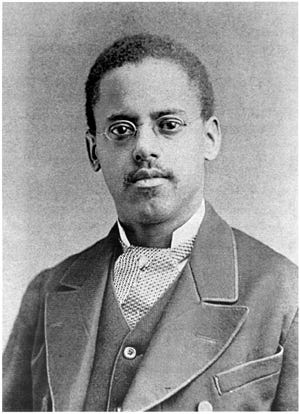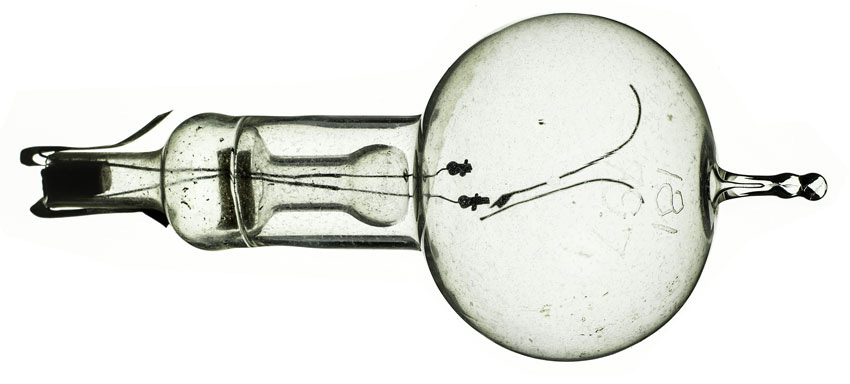Issue #151 Friday Funday October 14, 2022
No ads or annoying popups ever! So instead, please see the important information at the bottom of this post. Please keep those “Likes” and comments coming! Thanks!
In school, we were taught that Thomas Edison invented the light bulb, and that is mostly true. Edison was a prolific inventor and our society would be quite different without him. But the light bulbs we’ve used for over 140 years were not totally Edison’s invention.
In 1802, Humphry Davy from Cornwall, England invented the first electric light. He experimented with electricity and invented an electric battery. When he connected wires to his battery and a piece of carbon, the carbon glowed, producing light. His invention was known as the Electric Arc lamp. And while it produced light, it didn’t produce it for long and was much too bright for practical use.
In the late 1870s, Edison was trying to come up with a high-resistance system that would require far less electrical power than was used for the arc lamps. This could eventually mean small electric lights suitable for home use.
By January 1879, at his laboratory in Menlo Park, New Jersey, Edison had built his first high-resistance, incandescent electric light. It worked by passing electricity through a thin platinum filament in the glass vacuum bulb, which delayed the filament from melting. Still, the lamp only burned for a few short hours.
Lewis Latimer Invents the Perfect Carbon Filament for Edison’s Light Bulbs and several other important inventions
Edison and his team developed several filaments for the light bulb before he applied for the initial patent in 1879. But it wasn’t until Lewis Latimer invented a carbon filament that he licensed to Edison in 1884 when he joined the Edison Electric Light Company that the long-lasting (1200 hours) light bulbs that we’ve used for decades were perfected.
Latimer received two patents in 1881 and 1882 for an electric lamp and for an improved method for the production of carbon filaments for lightbulbs.
Lewis Latimer worked as a draftsman for Edison and wrote the first book on electric lighting. He was also responsible for translating data into German and French, as well as gathering that information.
Most sites that write and teach about Thomas Edison and the light bulb do not even mention the contributions of Lewis Latimer. They just talk about Edison’s “team.” Today, if teachers try to teach about Lewis Latimer in many school districts, they’d be accused of teaching “CRT.”
Latimer also received patents for, among other things, an improved “water closet” for railroad cars in 1874, an apparatus for cooling and disinfecting in 1886, and a lamp fixture in 1910.
Latimer also supervised the installation of public electric lights in New York City, Philadelphia, Montreal, and London, and worked in Edison’s legal department on patent litigations.
In 1876, Alexander Graham Bell employed Latimer, then a draftsman at Bell's patent law firm, to draft the necessary drawings required to receive a patent for Bell's telephone.
In 1894, Latimer pursued a patent on a safety elevator that prevented the riders from falling out and into the elevator shaft.
In 1911, Latimer became a patent consultant to law firms.
In 1918, Latimer joined the “Edison Pioneers,” a group of 100 inventors and former employees of Thomas Edison who had worked with the inventor in his early years. He was the only Black person or person of color in this group.
Lewis Latimer was also what would be considered to be a “renaissance man.” He authored several books and journal articles, played the violin and flute, painted portraits, and wrote plays.
He was active in the civil rights activities of his day and taught English and drafting to immigrants in New York.
He was inducted into the National Inventors Hall of Fame.
The Early Life of Lewis Latimer
Lewis Latimer was born in 1848 in Chelsea, Massachusetts. Before his birth, his parents escaped slavery in Virginia and arrived in Chelsea in 1842. The elder Latimer was recognized by a colleague of his former slave owner and arrested and tried. He was represented in court by Frederick Douglass and William Lloyd Garrison. His arrest and trial led to several anti-slavery laws in Massachusetts. Eventually, the elder Latimer was able to purchase his freedom and live with his family in Chelsea.
However, after the 1840 Dred Scott Decision, Mr. Latimer, who had no proof he was freed from slavery, had to leave his family and flee for his own safety. Mrs. Latimer decided to split up the family and sent Lewis and his brothers to a farm school and his sisters to a family friend.
Lewis Latimer joined the U.S. Navy at age 16, and after receiving an honorable discharge, he was employed as an office boy at a patent law firm. There he learned how to use drafting tools and was subsequently promoted to head draftsman at a salary of $20.00 per week (about $438.59 today) by 1872.
A Holiday Movie about a 19th-century Black Inventor
In 2020, a new musical movie called “Jungle Jangle: A Christmas Journey” was first shown on Netflix. The movie is a delightful fictional story about an inventor and toy maker named Jeronicus Jangle who was betrayed by his apprentice who steals his book of inventions and starts his own toy-making company.
Jeronicus, devastated, loses his creative spark, and thirty years later, after the death of his wife, is running a failing pawnshop. Jeronicus’ daughter, from whom he is estranged, sends her young talented and inquisitive daughter to meet and visit her grandfather. Eventually, with her help and the help of others, Jeronicus is able to get his inventions back and restore his creations and his factory.
Segue: Jeronicus’ young assistant, a 10-year-old boy, is named “Edison Latimer.”
The movie stars Forest Whitaker, Phylicia Rashad, Keegan-Michael Key, Anika Noni Rose, Ricky Martin, Kieron Dyer as Edison, and Madalyn Mills as Jeronicus’ granddaughter Journey.
The movie, set in a Victorian-era interracial town that never would have existed in real life, has wonderful singing and dancing, and the beautiful costumes and awesome natural hairstyles are phenomenal.
It is definitely worth your while to see during the holidays, even if you don’t have young children. It is available on Netflix. View the beautiful trailer below.
Let Us Know What You Think!
Help Us to Grow “We Are Speaking!”
Read and listen to “We Are Speaking” on the iOS app!
Please support us: subscribe for free or upgrade your current subscription to a paid level at only 35¢ per issue.1
Please check out the products and services of the TeamOwens313 Global Creative Community Branding and Marketing Academy (GCC BMA) for independent writers and creative professionals:





